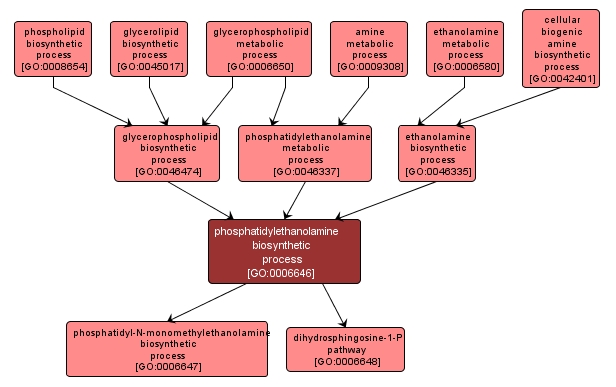GO TERM SUMMARY
|
| Name: |
phosphatidylethanolamine biosynthetic process |
| Acc: |
GO:0006646 |
| Aspect: |
Biological Process |
| Desc: |
The chemical reactions and pathways resulting in the formation of phosphatidylethanolamine, any of a class of glycerophospholipids in which a phosphatidyl group is esterified to the hydroxyl group of ethanolamine. |
Synonyms:
- phosphatidylethanolamine biosynthesis
- phosphatidylethanolamine synthesis
- phosphatidylethanolamine anabolism
- phosphatidylethanolamine formation
|
|

|
INTERACTIVE GO GRAPH
|














